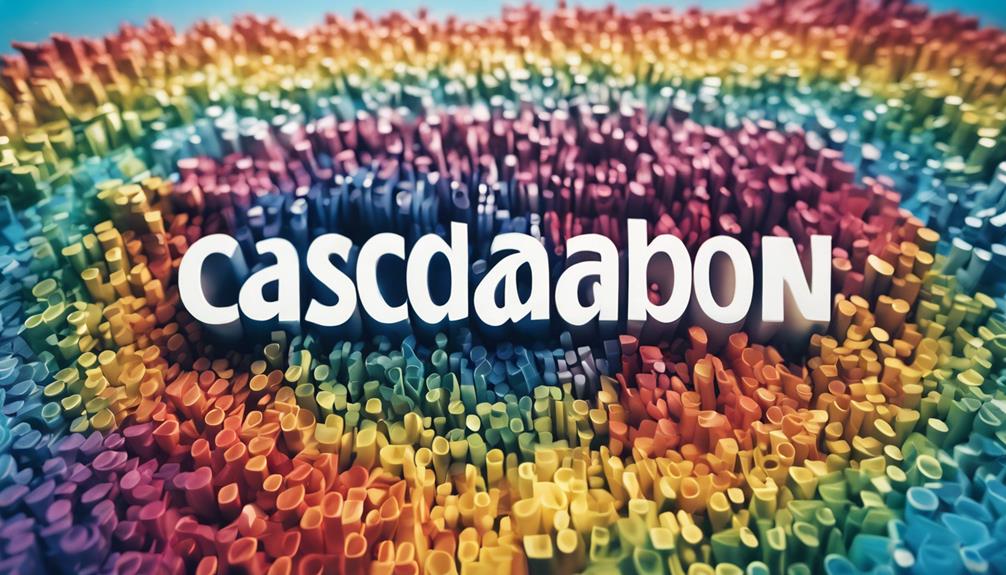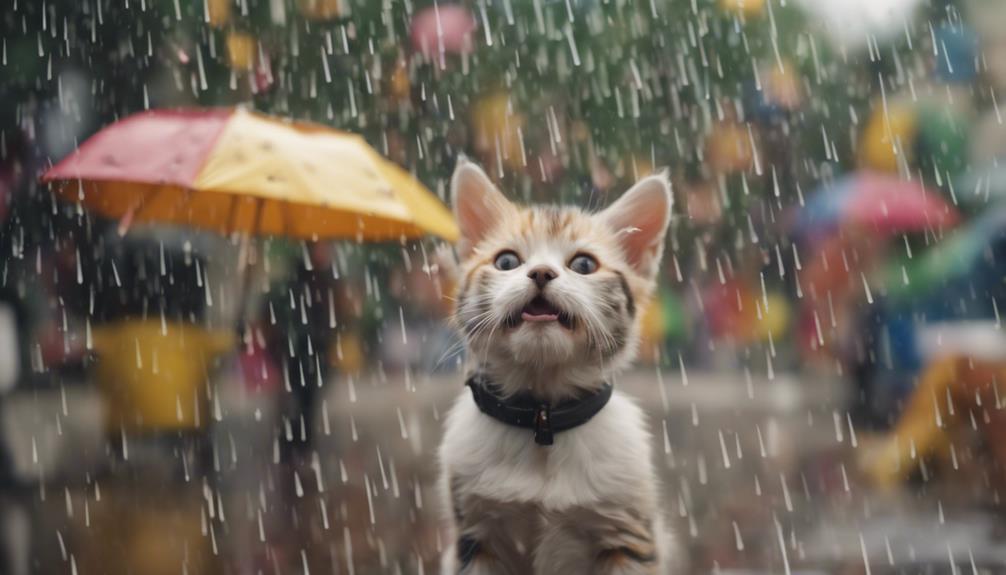In writing, figurative language like metaphors, similes, and personification brings words to life with vivid imagery and emotional depth. Similes, using 'like' or 'as', enhance descriptions and storytelling. Metaphors create powerful connections and evoke emotions. Personification gives life to nonhuman entities, engaging readers with relatable emotions. Hyperboles exaggerate for dramatic effect, intensifying emotions and adding humor. Alliterations amplify language allure with repeated consonant sounds, making phrases more memorable. Oxymorons blend contradictory concepts for depth and complexity. Idioms reflect cultural values with insights into language proficiency. Each type adds a unique dimension to writing, captivating readers with creativity.
Key Takeaways
- Similes and metaphors enhance descriptions and narratives with vivid imagery and deeper meanings.
- Personification brings objects to life by attributing human qualities, engaging readers in relatable emotions.
- Hyperboles exaggerate for emphasis, creating vivid and dramatic effects in writing.
- Alliteration adds rhythm and emphasis with repeated consonant sounds, captivating readers with its aesthetic appeal.
- Oxymorons blend contradictory concepts to add depth and complexity in just a few words.
Simile Examples
Similes, like bright stars in a dark sky, illuminate comparisons between two unlike things using like or as for vivid imagery.
In the domain of figurative language, similes serve as important tools to enhance the depth of descriptions and narratives. For instance, in poetry, phrases like 'as brave as a lion' or 'like a bolt of lightning' are common simile examples that evoke strong visual images.
In storytelling, similes help create engaging and relatable comparisons that resonate with readers. These types of figurative language not only add creativity to writing but also aid in conveying complex emotions and ideas effectively.
Metaphor Examples

Metaphors are powerful tools in writing that compare two different things to create vivid imagery. They help evoke emotions and deeper meanings, allowing readers to connect with the text on a more symbolic level.
Metaphor Definition
Exploring the domain of figurative language, we venture into metaphors, where comparisons between unlike entities weave a tapestry of vivid imagery and deeper meanings in writing.
A metaphor is an implied comparison that enhances descriptive quality by equating one thing to another without using 'like' or 'as'. These comparisons are prevalent in literature and everyday language, evoking emotions and conveying profound messages.
In poetry and storytelling, metaphors add depth to descriptions, helping readers visualize and understand complex ideas. By highlighting similarities between dissimilar things, metaphors enrich the impact of writing, making it more engaging and memorable.
Mastering the art of metaphors can elevate the quality of one's writing, creating a powerful connection between the writer and the reader.
Metaphor Examples
Delving into the world of figurative language, we encounter various metaphor examples that illuminate writing with vivid comparisons between disparate elements. Metaphors, as implied comparisons between unlike things, enhance descriptive quality by creating vivid imagery.
They evoke emotions and deeper meanings, adding depth to descriptions while highlighting similarities between unlike things for better understanding. Widely utilized in poetry and storytelling, metaphors enrich narratives and engage readers effectively.
In literature and everyday language, metaphors serve as powerful tools to convey complex ideas in a relatable manner. By infusing writing with metaphorical expressions, authors can paint elaborate pictures in the minds of their audience, making the reading experience more engaging and immersive.
Personification Examples

Using personification in writing can transform ordinary objects into dynamic characters that engage readers with relatable emotions and actions. Personification attributes human qualities to nonhuman entities, infusing life into them and making them more vivid and memorable.
This literary device is commonly found in fables, myths, and children's literature to establish a connection with the audience. For example, phrases like 'The wind whispered through the trees' and 'The sun smiled down on the field' exemplify how personification enhances storytelling by giving inanimate objects emotions and actions.
Hyperbole Examples

Hyperbole in writing involves exaggerated expressions that push the boundaries of reality for emphasis. These outlandish comparisons and overstated descriptions are meant to create a vivid and dramatic effect in prose.
Exaggerated Expressions in Writing
When crafting engaging writing, one effective technique to employ is the use of exaggerated expressions, known as hyperbole, to emphasize a point vividly. Hyperboles can be a powerful tool in language, and here are some key points to understand about them:
- Hyperbole is a form of figurative language that involves intentional exaggeration for emphasis in writing.
- It's used to create a vivid and dramatic effect, making a point more strongly.
- Hyperboles can be found in everyday language, literature, and speech to add humor or intensify emotions.
Utilizing hyperboles can elevate the impact of your writing, leaving a lasting impression on your audience.
Outlandish Comparisons in Prose
Crafting vivid prose in writing involves weaving outlandish comparisons that stretch the boundaries of reality, enchanting readers with exaggerated imagery. Hyperbole, one of the common types of figurative language, utilizes exaggerated statements to emphasize a point dramatically. It adds humor and drama to writing by stretching the truth beyond normal limits.
For example, phrases like 'I could eat a horse' showcase extreme hunger in a humorous and memorable way. Writers strategically employ hyperbole to grab readers' attention and make their message more impactful. This literary device can be found in various literary works, advertisements, and everyday conversations, showcasing its versatility in enhancing communication through exaggerated yet engaging expressions.
Overstated Descriptions in Literature
Utilizing exaggerated descriptions in literature intensifies the impact of storytelling, engaging readers with vivid imagery and heightened emotions. When it comes to hyperbole in writing, it plays a vital role by enhancing the overall reading experience.
- Creating Vivid Imagery: Hyperbole allows writers to paint extravagant pictures in the minds of readers, making scenes come alive with exaggerated details.
- Eliciting Strong Emotional Responses: By using extreme exaggeration, writers can evoke powerful emotions in readers, drawing them deeper into the narrative.
- Emphasizing Key Points: Hyperbole can effectively highlight important ideas or themes in a story, leaving a lasting impact on the audience.
Alliteration Examples

Indulging in the art of alliteration amplifies the allure of language with its playful and poetic repetition of initial consonant sounds. Figurative language becomes more vibrant and engaging through the clever use of alliteration. This technique not only enhances the rhythm and musicality of phrases but also makes them more memorable. Writers often employ alliteration in poetry, slogans, and tongue twisters due to its aesthetic appeal and ability to add emphasis to words. By creating a cohesive and engaging flow in writing, alliteration captivates readers and listeners alike.
Some classic examples of alliteration include familiar phrases like 'Peter Piper picked a peck of pickled peppers' and 'She sells seashells by the seashore.' These catchy combinations of words not only showcase the beauty of language but also demonstrate how alliteration can bring a playful and rhythmic quality to writing. Mastering the art of alliteration can truly elevate one's writing to new heights.
Onomatopoeia Examples

Delving into the world of onomatopoeia in writing reveals a dynamic interplay of words that vividly mimic sounds, adding an immersive quality to the text. Onomatopoeia is commonly used in various literary forms to bring scenes to life with auditory sensations. Here are three types of onomatopoeia commonly found in writing:
- Animal Sounds: Onomatopoeic words like 'meow,' 'oink,' and 'moo' are frequently used to mimic the sounds animals make. These words create a vivid image of the animal's noise in the reader's mind.
- Nature Sounds: Words such as 'rustle,' 'buzz,' and 'drip' imitate sounds found in nature. They enhance the reader's sensory experience by evoking the sounds of the environment being described.
- Mechanical Sounds: Onomatopoeia is also used to replicate mechanical noises like 'whirr,' 'clang,' and 'click.' These words add a layer of realism to descriptions involving machinery or technology.
Understanding the types of onomatopoeia used in writing can help writers create more engaging and sensory-rich narratives.
Oxymoron Examples

Oxymoron examples intricately blend contradictory concepts to create impactful and thought-provoking expressions in writing. These combinations of words with opposite meanings, such as 'bittersweet,' 'deafening silence,' and 'jumbo shrimp,' serve to captivate readers by introducing a twist of paradox. Writers strategically employ oxymorons to evoke a complex emotional response and emphasize the duality or irony present in a situation.
The beauty of using oxymorons lies in their ability to convey depth and complexity in just a few words. By juxtaposing conflicting ideas, writers can create a sense of tension or surprise, prompting readers to pause and contemplate the underlying message. This figurative language adds layers of meaning to the text, making it more engaging and memorable.
Through oxymorons, writers can highlight the contradictions inherent in human experiences, drawing attention to the nuances of emotions and situations. These expressions not only spark curiosity but also invite readers to explore the complexities of life through the lens of language.
Idiom Examples

Exploring the world of idioms reveals a vibrant tapestry of language full of colorful expressions and cultural nuances. Idioms, as figurative expressions, enrich communication by adding depth and creativity to everyday conversations. They're like linguistic puzzles that convey meanings beyond their literal interpretation.
Here are three insights into the fascinating world of idioms:
- Cultural Significance: Idioms often reflect the values, beliefs, and traditions of a particular culture or community. Understanding these expressions can provide valuable insights into the mindset and customs of a group of people.
- Language Proficiency: Learning idiomatic expressions can enhance language proficiency by allowing individuals to communicate more effectively and naturally in a given language. Mastery of idioms can help one sound more fluent and culturally attuned.
- Challenge for Learners: Idioms can pose a challenge for non-native speakers due to their unique meanings. However, mastering these expressions can be a rewarding experience that deepens one's understanding of a language and its cultural context.
Frequently Asked Questions
What Is an Example of Figurative Language in Writing?
We can find various forms of figurative language in writing, such as similes, metaphors, personification, hyperbole, and alliteration. These techniques enhance the imagery and convey deeper meanings in a text. By using figurative language, authors create vivid pictures in the reader’s mind and evoke emotions that plain descriptions might not. For instance, figurative language in *Can’t Help Falling in Love* contributes to the song’s romantic resonance, with lyrics that compare love to a force beyond control. Through these techniques, both poetry and prose achieve a greater emotional and artistic depth. Furthermore, the figurative language in *Can’t Help Falling in Love* exemplifies how metaphor and hyperbole can be powerful tools for expressing complex emotions. By suggesting that love is an irresistible force, the song connects with listeners on an emotional level, making it relatable and timeless. The skillful use of figurative language allows the lyrics to transcend literal meaning, immersing the audience in a deeper, more poetic experience.
For instance, a simile compares two things using 'like' or 'as,' while a metaphor equates two unlike things. Personification attributes human traits to non-human entities, and hyperbole exaggerates for effect.
Alliteration repeats consonant sounds for emphasis and rhythm.
What Are the 5 Main Types of Figurative Language?
We'll cover the 5 main types of figurative language:
- Metaphor compares unlike things.
- Simile highlights similarities with 'like' or 'as.'
- Personification assigns human traits to non-human entities.
- Hyperbole uses exaggeration for emphasis.
- Alliteration repeats consonant sounds for rhythm and emphasis.
Each type serves a unique purpose in creating vivid imagery and engaging emotions in writing.
What Do Writers Use Figurative Language?
We use figurative language in writing to create vivid imagery, evoke emotions, and engage readers deeply.
By employing similes, metaphors, personification, hyperbole, and alliteration, writers add layers of meaning, making complex ideas more accessible and encouraging active audience participation.
Figurative language captivates readers, enhances descriptions, and leaves a lasting impact through creative expression, ultimately enriching the overall reading experience.
What Is an Example of a Text With Figurative Language?
We can find figurative language in various texts, enriching the reading experience. It adds depth and imagery, making concepts vivid.
For example, in a poem, the line 'The sun smiled warmly' personifies the sun, evoking a sense of comfort. Such literary devices enhance storytelling by painting a picture in the reader's mind.
They offer a creative lens to view the world, making writing engaging and thought-provoking.
Conclusion
To sum up, figurative language adds depth and creativity to writing. Similes, metaphors, personification, hyperbole, alliteration, onomatopoeia, oxymorons, and idioms are powerful tools that enhance the imagery and impact of the text.
By using these literary devices effectively, writers can engage readers and convey complex ideas in a more engaging and memorable way. Just as a painter uses different colors and brushstrokes to create a masterpiece, writers use figurative language to paint vivid pictures with words.











